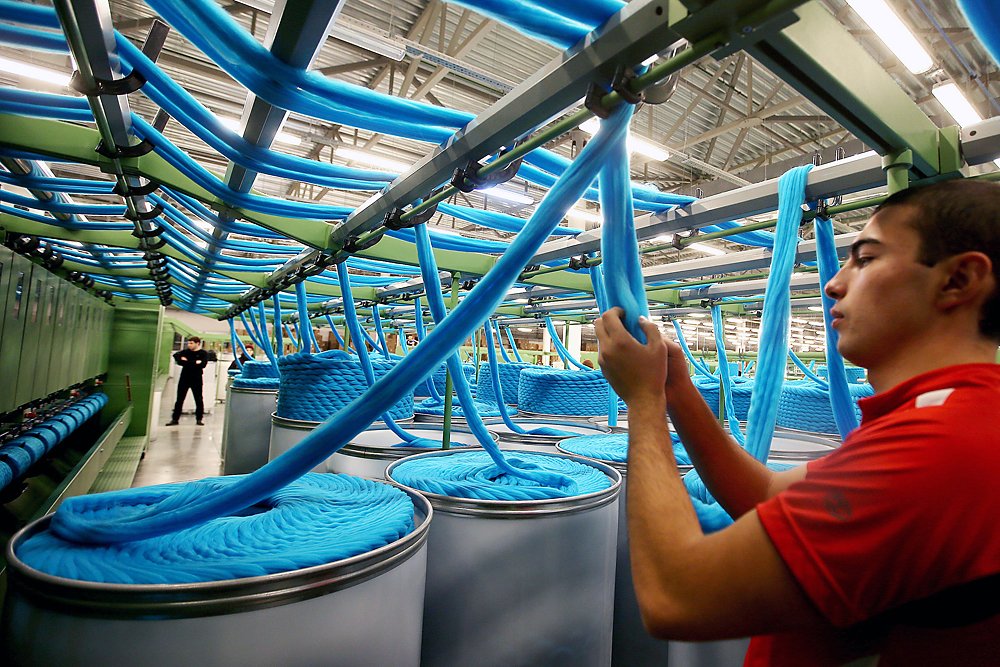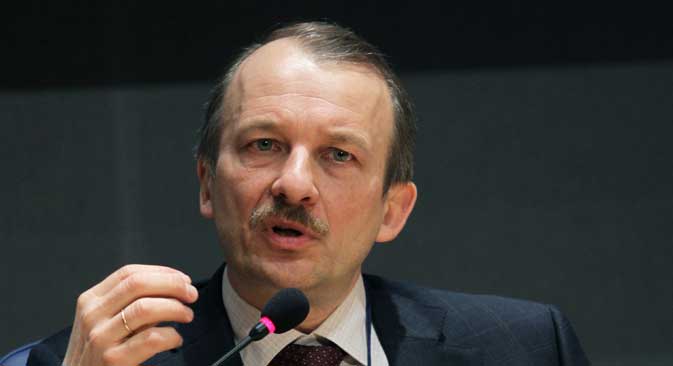Can latest government strategy lift the Russian economy?

The government is trying to help the real sector of the economy without going through the banking structures.
Sergey Fadeichev/TASSSigns for the Russian economy at the beginning of 2016 are not looking good. According to a variety of indicators, the crisis has deepened. The GDP fell by 3.7 percent in 2015, retail trade declined by 10 percent and investment shrank by 8.4 percent.
In an attempt to keep the economy afloat, the government has now asked all the ministries to reduce their spending. The reductions will total around 0.9 percent of GDP and will help maintain the budget deficit below 3 percent. However, after the cost of Brent crude fell in January to $30 a barrel (which may lead to further slowdowns in Russia's oil-dependent economy), the government decided to develop a special anti-crisis plan.
Unlike last year, the government is trying to help the real sectors of the economy without going through the banking structures. If in 2009 and 2014 the government directed anti-crisis resources through the capitalization of banks and the stimulation of loans, then the plan now is to issue various types of grants and government contracts. This means that the enterprises will receive money directly, bypassing credit institutions, and it will be the government that decides who will be the recipients of the precious billions.
But could there be another way of helping Russia to climb out of financial trouble? Here are three potential options the Kremlin could also consider:
Three alternatives to the decision
Increase taxes
Russia currently has an 18-percent value-added tax (equivalent to the European VAT). In 2014 the government actively discussed raising the Russian VAT to 20 percent.
As an alternative, the government is also reviewing the possibility of introducing a sales tax, like in the U.S., of 3 percent. However, independent economists have spoken against the sales tax. A similar tax existed in Russia in the 1990s and it had an effect on only 30 percent of the population, meaning that two thirds of the country did not pay it. However, it is unlikely that the government will pursue this option after Russian President Vladimir Putin promised in June 2015 not to raise taxes in Russia for four years.
Take a loan
Russia has a record low level of government debt, at around 12 percent of the country's GDP.
Former Finance Minister Alexei Kudrin calculates that the government can afford a national debt of anywhere up to 30 percent without serious repercussions. Given the fact that Russia's budget in 2015 was about 75 trillion rubles ($945 billion), the Russian government can safely borrow up to $170 billion on foreign markets.
The problem is that today, Russia's economy is still subject to sanctions. Additionally, international rating agencies regularly worsen its prospects of development. On February 2, for example, Fitch Ratings lowered its rating of the Russian economy by 0.5 percent, saying that Russia's GDP in 2016 will decline by 1 percent. This inevitably reflects on the cost of borrowing money.
Change the budget structure
Russia is one of the world's leaders in terms of share of GDP directed towards national defence and the army. Despite the fall in GDP, the volume of such spending is only increasing. In 2016 it will reach 4.5 percent of GDP, a percentage that is bigger than in the U.S. and in China. Budget sequestration does not concern army expenditure.
Another privileged category of the population is the pensioner. Every year the government indexes pensions to the growing inflation. An alternative strategy would be to increase the pensionable age, to cancel pension indexation, and to reduce defence spending. A priority in such a case would be to support education. At the beginning of January 2016, German Gref, head of Russia's largest bank, Sberbank, and the former economy minister spoke about the necessity of moving precisely in this direction.
All rights reserved by Rossiyskaya Gazeta.
Subscribe
to our newsletter!
Get the week's best stories straight to your inbox
